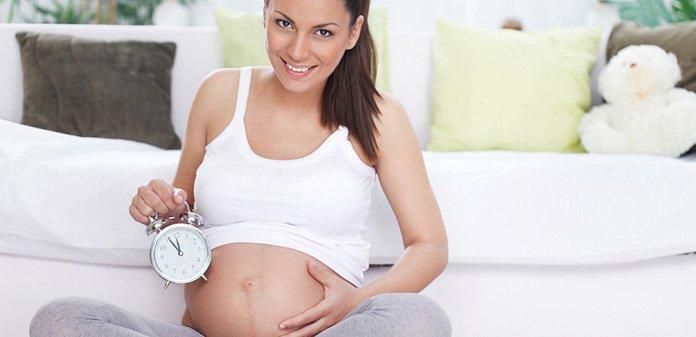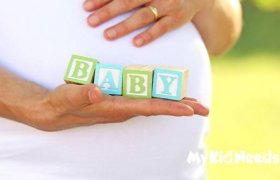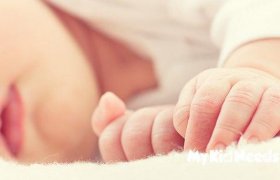When Are Women Most Fertile?

Trying for a baby can be made much easier when you understand how your own body works. Ever since you started having your period, your body has been following a cycle that affects when you conceive. Although the standard length is around 26 to 30 days, some women might be irregular and therefore, be more difficult to track.
Understanding your own body is always key to good health and as well as being successful at getting pregnant. It always sends signs that help you know how it is doing and at the same time when fertilization is most likely to happen. The key is to be acquainted with your own menstrual cycle and how to identify the different stages so you can time your attempts with your partner.
Women And Fertility
The Average Cycle
The body goes through several steps during the menstrual cycle. During this time, her body prepares for the possibility of conception, not just through releasing an egg, but also through making sure that the uterus is ready to support a fertilized egg.
The first day of a new cycle begins with the beginning of menstruation. This means that tissue that lined the uterus is shed and is released. During the first 5 days of the cycle, women have low levels of both estrogen and progesterone.
After the menstruation, days 6 and 7 are when an egg starts to grow in one of the two ovaries. This is triggered by the hypothalamus, which secretes the gonadotropin-releasing hormone, or GnRH. The release of GnRH will, in turn, cause the pituitary gland to release both the FSH (follicle stimulating hormone) and LH (luteinizing hormone). These hormones are the reason why an egg starts growing. As this happens, estrogen is also produced, though progesterone levels do not increase.
Days 8 to 12 are the times when levels of estrogen go up. In turn, the uterus lining starts to thicken. It also develops blood vessels so that if fertilization happens, there will be a steady supply to the growing embryo. On day 12, a woman has the greatest chance to get pregnant though she has not yet ovulated. This is because sperm do not die until 2 to 5 days after contact.
During day 14, the levels of estrogen fall though LH levels go higher. This is when an egg is released, or ovulation happens. The egg will survive around 12 to 24 hours.
From days 15 to 24, the corpus luteum (or the empty egg follicle) triggers high levels of estrogen and progesterone. This is important in preparing the uterus for possible conception. The fertile period generally ends at day 17.
At day 25, if no fertilization happens, then progesterone levels sink. At day 28, if the woman is not pregnant, both estrogen and progesterone are low and menstruation starts the next day.

How to Track Your Own Cycle
The sequence outlined above is the typical timeline for women who have regular cycles. However, not all women have the same condition. Because of this, it is of utmost importance that women track their own cycles to create their own fertility calendar. There may be several ways of doing this so that days with the highest chances of conception can be identified.
Calendar or Rhythm Method
Women who have consistent cycles can easily use this method. You do not need to have the ordinary 28 days like outlined above, but you should have your menstruation monthly, with cycles around 26 to 31 days. From this, you can count the days when you have the highest chance of getting pregnant.
To calculate your own fertile days, start by monitoring your menstrual cycle for a few months. Identify the shortest one. For example, the shortest is 28 days. Now subtract 18 from 28, and you get the magic number 10. This means you become fertile on the 10th day of your cycle. Now take the longest cycle, for example, 31 days, and subtract 11. Your 20th day is therefore the last day that you may possibly conceive. In conclusion, you will have greater chances of getting pregnant between days 10 and 20 of your cycle.
Although easy, this method is not as reliable because cycles do vary and there are other factors that might affect fertility as well. It is also not for women who are irregular or who have great variations in their cycles.
Some women use items that can help them track the different stages of their cycle, like CycleBeads. This way, they have a visual and easy way to remember when they have the biggest possibility of conceiving.
Basal Body Temperature Method
During the cycle, levels of certain hormones rise or fall, and this may affect the body’s temperature. Specifically, LH levels that rise before ovulation also increase the temperature by 1 to 2 degrees. This is why some women measure and track their basal body temperature to find out the fertile days. It is important to measure when the temperatures are lowest during the day, which is normally in the morning before getting up from bed.
It might take a while to establish your body’s normal temperatures but in general, when it goes up by 1 to 2 degrees, you have recently ovulated.
Cervical Mucus Method
Another typical way of identifying the fertile days is to observe the cervical mucus. During the cycle, this can change. Just after menstruation, women tend to be dry. It starts to get sticky just before ovulation and when the woman is fertile, it becomes wet, sticky and semi-transparent.
Hormone Tracking
There are kits similar to pregnancy tests that can be purchased nowadays and that measure levels of hormones in urine. They normally look for LH surges that signal ovulation. This method is not just easy, but it is also more reliable than others.
Experts also recommend combining two or more of these methods to more accurately identify when you are really fertile. Doing so can help couples who might be busy or who would really want to increase their chances of conceiving. Some of these methods might require a bit of time to do, but with the higher possibility of getting pregnant, it can really be worth it in the end, when your doctor finally hands you your newborn baby.







